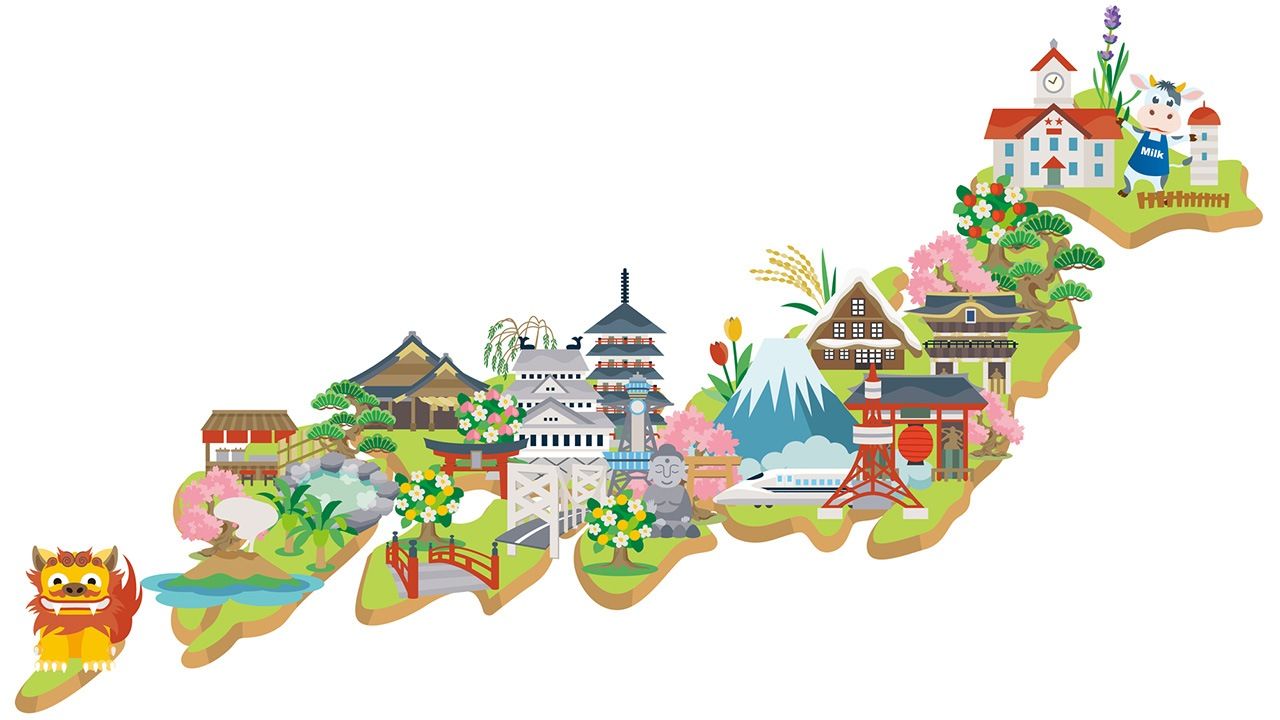
A Prefecture by Any Other Name
Politics Society- English
- 日本語
- 简体字
- 繁體字
- Français
- Español
- العربية
- Русский
In English, it is usual to say that Japan has 47 prefectures. In Japanese, however, they are divided into one to (Tokyo), one dō (Hokkaidō), two fu (Osaka and Kyoto), and the other forty-three ken. What do these different names mean?
Under the Local Autonomy Act of 1947, all 47 prefectures are defined as general public bodies and they basically have the same roles, authority, and rank. The different names are due to their historical background.
In 1868, the Meiji government designated 10 of the former Edo shogunate territories—including Edo (soon to be renamed Tokyo), Osaka, Kyoto, Hakodate, Nagasaki, and Nara—as fu (府), or urban prefectures. Fu holds the meaning of being an administrative and military center, so this use indicates how important these areas were to the government.
In the following year, seven were reassigned as ken (県), or prefectures, and only the political center of Tokyo, the commercial city of Osaka, and Kyoto, as the location of the palace, remained as fu. With the abolition of the han system in 1871, all the feudal domains came under central government control, leading to the creation of more than 300 prefectures. Following this, there was repeated integration until around 1888, at which point the divisions were close to the current 47 prefectures.
Tokyo
| 1868 | Edo Castle capitulates and Edo-fu is established. |
| 1868 | The name Edo-fu is changed to Tokyo-fu. |
| 1889 | Tokyo-shi (a city equivalent to the current 23 municipalities of central Tokyo) is founded within Tokyo-fu. |
| 1943 | Citing the need for a strong administration to conduct wartime activities, including air defense and distribution of daily necessities, the Ministry of Home Affairs oversees an initiative to abolish Tokyo-shi and Tokyo-fu, and establish Tokyo-to (metropolitan Tokyo). |
| 1947 | The 23 wards or ku are designated as special wards under the Local Autonomy Act. |
A number of Japanese cities are divided into administrative areas known as ku. In government-designated cities, like Kyoto and Kawasaki, these ku are known as wards. The to (都) of Tokyo is unique in that its 23 ku, such as Shinjuku, Kōtō, and Minato, are municipalities in their own right. Residents vote directly for the mayor and assembly members, and the Tokyo ku—all of which call themselves cities in English—make their own decisions on social welfare, education, and other areas.
Hokkaidō
| 1869 | With the aim of developing the former northern region of Ezo, which Edo shogunate rule had not reached, a Hokkaidō Development Commission is established as a central government authority with the same status as a ministry. |
| 1882 | The Hokkaidō Development Commission is abolished and the three ken of Hakodate, Sapporo, and Nemuro are formed. |
| 1886 | The three ken are abolished and the Hokkaidō Agency is established. |
| 1947 | Hokkaidō becomes a self-governing prefecture under the Local Autonomy Act, but is not given the suffix ken, being known instead as a dō (道). |
Osaka/Kyoto
| 1868 | The Meiji government establishes 10 fu, including Osaka-fu and Kyoto-fu. |
| 1869 | Only Tokyo, Osaka, and Kyoto remain as fu. |
| 1947 | Under the Local Autonomy Act, only Osaka and Kyoto are still called fu. |
The major issue for the Osaka prefecture gubernatorial and Osaka city mayoral elections on April 7, 2019, is the plan to reorganize Osaka by abolishing the ordinance-designated city and instead forming four special wards as part of a to or metropolis. Advocates wish to get rid of the wasteful dual administration of prefecture and city, creating clear roles where the prefecture is responsible for infrastructure development and the special wards provide educational and welfare services directly to residents as municipalities.
(Translated from Japanese. Banner photo © Pixta.)